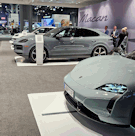Porsche stability management Manufacturers are in love with the idea of creating new names for existing systems. But Porsche takes this to the highest level, putting the company name on systems, in this case Porsche Stability Management (PSM). This of course, turns out to be nothing more than stability control, which — thankfully — uses …
Tag: Porsche
Permanent link to this article: https://dashboardsymbols.com/2025/02/porsche-symbols-page-is-now-up/
Permanent link to this article: https://dashboardsymbols.com/2025/02/porsche-stability-management-makes-for-a-new-entry-on-our-abbreviation/
Porsche manuals hold many more indicators in text
Porsche manuals We discovered a source for Porsche manuals and embarked on updating the Porsche dashboard symbols page. It was then that we discovered that we had never put up a symbols page for the company. So, we’re building one using the manuals that are now available and in the process we discovered that Porsche …
Permanent link to this article: https://dashboardsymbols.com/2025/02/porsche-manuals-hold-many-more-indicators-in-text/
Egress warning indicator
Egress Warning This is an Egress Warning Indicator symbol. It appears as a vehicle seen from above with an open door and two curved lines outside of the door. Its the warning, from Porsche, makes occupants of a vehicle when the stationary aware of road users, such as cars, motorcycles, or bicycles approaching from behind. …
Permanent link to this article: https://dashboardsymbols.com/2025/02/egress-warning-indicator/
Porsche back-up start page review finds two changes
Porsche back-up start A full review of Porsche back-up start processes results in two updates. We found changes made to Panamera, Cayenne and Taycan models and the new Macan EV gets a Panamera match. Back start procedures are made necessary by the batteries in key fobs dying. Panamera and Macan EV The Panamera continues the …
Permanent link to this article: https://dashboardsymbols.com/2025/02/porsche-back-up-start-page-review-finds-two-changes/
Our Volkswagen symbols page has been reset by color
Volkswagen symbols Well, our Mini symbols update is finished and we turn to other European manufacturers starting with a rearrangement of the Volkswagen symbols page by color. Volkswagen, Audi, Skoda and Porsche are the most difficult to address because access to owner’s is restricted. However, we did find a source for Porsche manuals, which will …
Permanent link to this article: https://dashboardsymbols.com/2025/02/our-volkswagen-symbols-page-has-been-reset-by-color/
2024 New York International Auto Show Reflections
Who Showed, Who Didn’t The 2024 New York International Auto Show (NYIAS) was notable as much for who still didn’t show up as for what we found on the show floor. Since the pandemic shut down the show for two years, Mercedes-Benz and BMW have yet to reappear. And while Mazda and Mitsubishi made appearances …
Permanent link to this article: https://dashboardsymbols.com/2024/03/2024-new-york-international-auto-show-reflections/
- 1
- 2


Porsche symbols page is now up
Porsche Symbols Our Porsche symbols page is at last finished and posted. It is automatically fully updated through 2025, but it the process, we added 32 warning symbols and indicators that were not previously in our system. As is more often than not the case, the majority of the symbols are simply unnecessary re-arrangements of …
Continue reading